One of the advantages of increasing age is that you get to see the same plants growing in the same places over the years, especially the unusual ones. We don’t expect herbaceous plants to be long-lived but they can be.
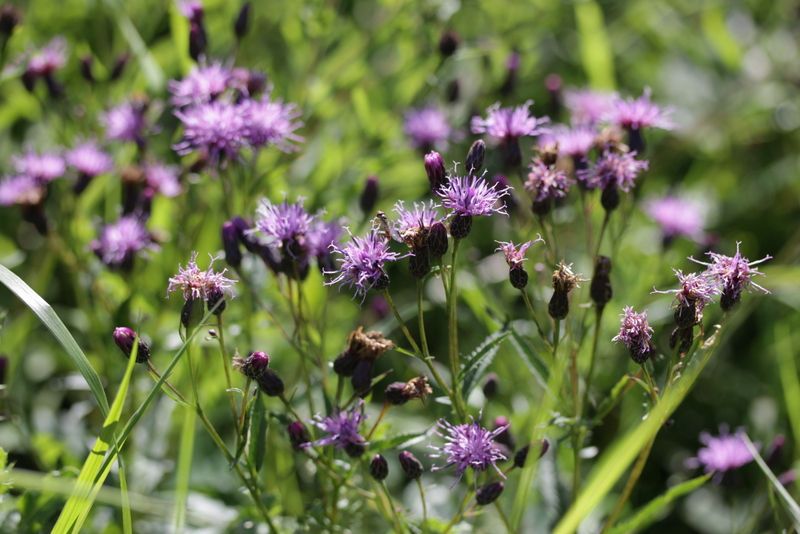
This week I went to visit some Saw-wort, a rare grassland plant in my area which grows in a short patch of road verge, with other locally scarce wildflowers, that I officially surveyed in 2008 whilst checking Local Wildlife Sites. Chris Lowe found Saw-wort on a wide road verge around the corner in the early 1990’s as part of his surveys for the Wildlife Trust – it was there too when I looked, but it was here also. I would have thought nothing much of where it was growing if it wasn’t for a project we carried out on surveying ancient hedgerows in 2005 when, researching enclosure dates, I discovered a book called The Durham Crown Lordships by D. S. Reid and published in 1990. This marvel of a book gives details of agriculture in the Parish of Long Newton in the 1600s.
Here’s a map – the purple dot is where you can find Saw-wort growing today.
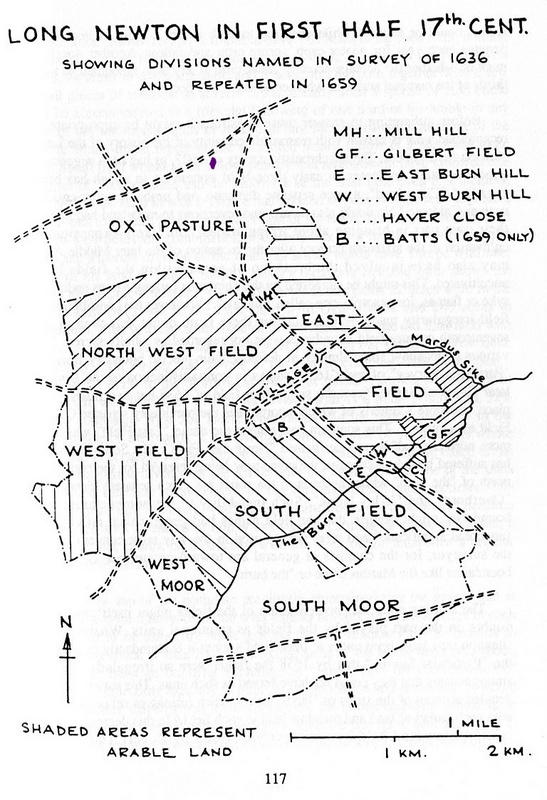
A survey of Long Newton in 1606 gave a total of approx. 3314 acres of which 1925 arable, 1121 pasture, 111 meadow and 155 town/roads etc. No woodland, and note a distinction is made between meadow and pasture. We are interested in the pasture, which is South Moor, West Moor and Ox-pasture and at the time was all open grazing land punctuated with gorse bushes. [There is written evidence of that gorse, for later in 1659 when enclosure occurred “The cottagers would be allowed to cut a maximum of 3 wagon loads of whins for fuel each year…” and “…all parties concerned could gather whins from the Ox Pasture and South Moor for “bearding” their fences up to 2nd February, 1660.” Whin = Gorse. I’m assuming, alongside the gorse, the pasture is rich in wildflowers, for what else would it be?].

D.S. Reid also speculates that the Parish would have looked much the same in the 1300s.
The following map is how the parish looked after enclosure. The large communally farmed fields of the medieval period are split up into smaller individual farms (the area apportioned to the Lord of the Manor gets split up into individual farms too, but that’s a different matter). Note the purple dot.
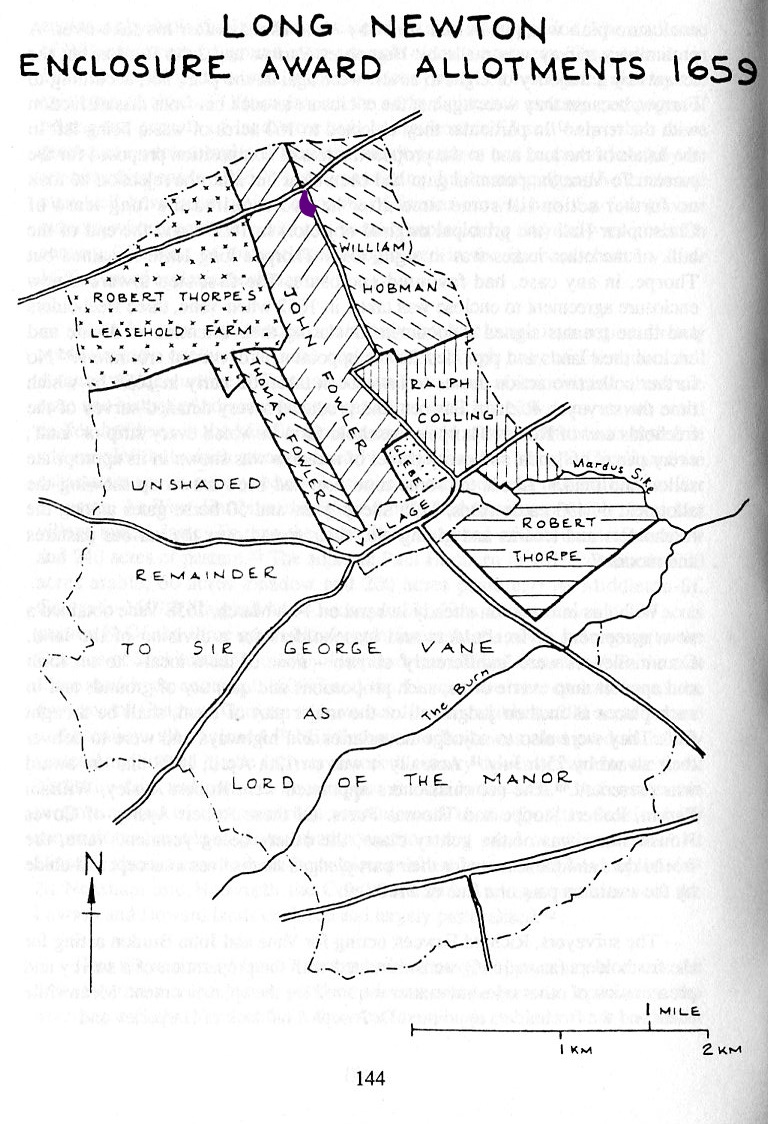
The position of the roads through the open pasture areas was also planned as part of the enclosure negotiations, as was their width. Where the road forked across Ox-pasture it was proposed that a new intermediate road should be substituted and, being less used, was created to be 3 poles wide – the width being defined by the planting of hedgerows, in this case by John Fowler and William Hobman (road now called Back Lane). The road running east-west across ox-pasture was wider at 4 poles because it was the busier road (now called Darlington Back Lane). Busier roads have more puddles and ruts because of the traffic they carry and so need to be wider so you can go around the puddles in your horse-drawn cart.
Eventually, a tarmac road is created and so the road-verges come into existence.
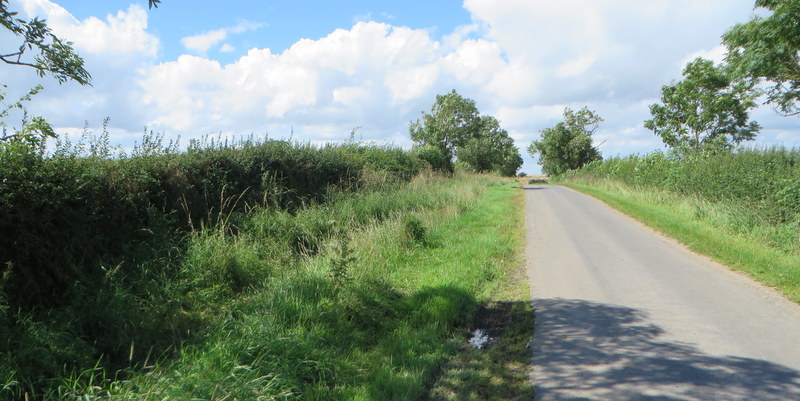
Today, Saw-wort* grows on only one length of verge of Back Lane with Pepper-saxifrage and Betony – a bit higher than the surrounding land so water drains from it rather than onto it, thus making sure fertilizer from the surrounding arable fields doesn’t reach it and enable nettles to out-compete the wildflowers.
In the hedge opposite them (planted by William Hobman) grows some gorse (or should I say whin?).
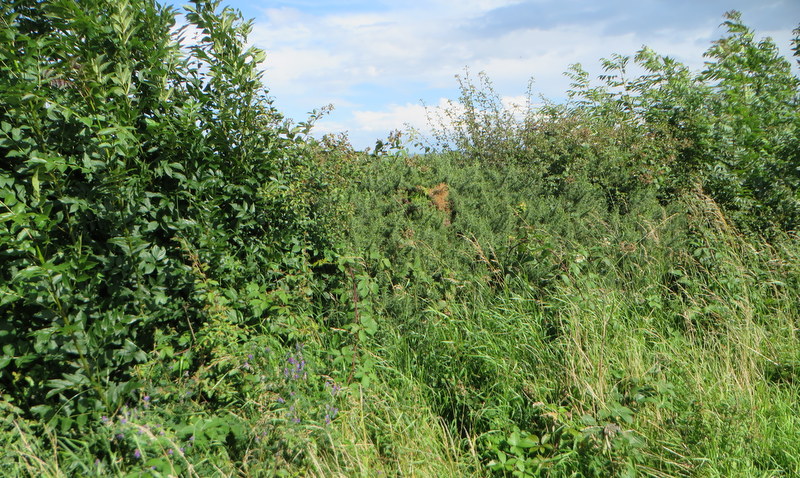
I’m pretty sure this situation is the same elsewhere in the English lowlands – straight sections of road with wide road verges were placed through the medieval (Ox)pasture of the parish at the time of enclosure and if they have not been damaged in all those years they will still have sections of wildflower-rich plant communities; as important a link to our past as medieval churches. Perhaps if we weren’t all so plant blind we would formally recognise them as relics of our cultural past.
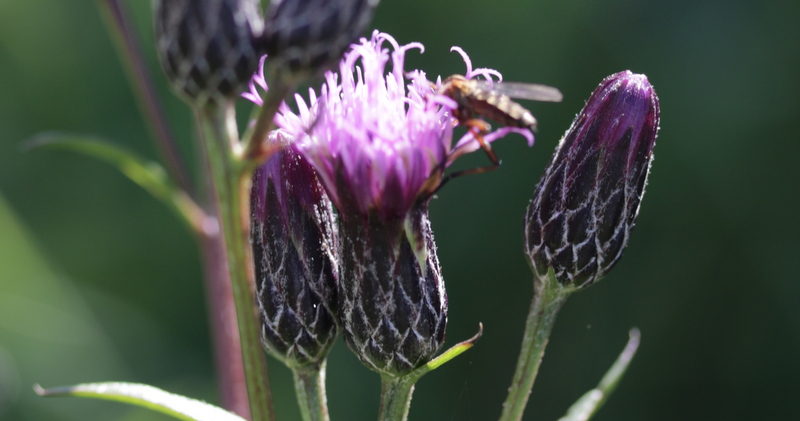
*Is Saw-wort distribution on road-verges strongly correlated with sites that were previously medieval grazing pasture? Anyone carried out a proper academic study, rather than me extrapolating from a very limited survey area?
Notes
If you don’t believe me, or just want to look for yourself, then the National Library of Scotland gives you a very handy side-by-side map http://maps.nls.uk/geo/explore/side-by-side/#zoom=15&lat=54.5564&lon=-1.4244&layers=171&right=BingHyb here set up to show the straight sections of the roads mentioned in the blog above – zoom out to see Long Newton village to the south. Always park safely and take care if you are walking on roadsides; if in doubt, then don’t.
The Durham Crown Lordships by David S Reid, 1990 Durham County Local History Society.
My blog on the need for an ancient grassland inventory is here.
Update 14 May 2021
I wondered in the blogpost whether saw-wort distribution was strongly correlated with road-verges created as a consequence of Enclosure where the new straight roads were created through the medieval grazing pasture (moors) and the closest reference I have found is in the discussion of its habitat in the Biological Flora of the British Isles: Serratula tinctoria by Jefferson and Walker 2017 “… roadside verges where these support linear remnants of semi-natural grassland in communities such as those listed in Table 1 [MG1c, MG1e, MG4, MG5 amongst others]” and they also note that “Serratula tinctoria has a broad ecological amplitude with respect to soil type, but is almost always confined to semi-natural vegetation in habitats with low levels of soil fertility and disturbance.”

what a wonderful discovery! i am constantly impressed by the enduring strategies or should I say the strategies of endurance of plants. Doing the Woodland Trust Ancient Tree Hunt I am discovering venerable trees in hedgerows and banks that I have walked past unaware, for years.
Alas they are on the edges of intensively farmed fields so are mostly garlanded by nettles. I look forward to meeting Saw wort some day.
This is great stuff. I ‘discovered’ some Parsley fern growing on a site where it had not been seen (officially) for a hundred years which is a testimony not only to the tenacity and longevity of the plant itself but to our ignorance of the world around us. It seems to me plants are able to hold on perhaps as minute scraps of life for a lot longer than we give them credit for.